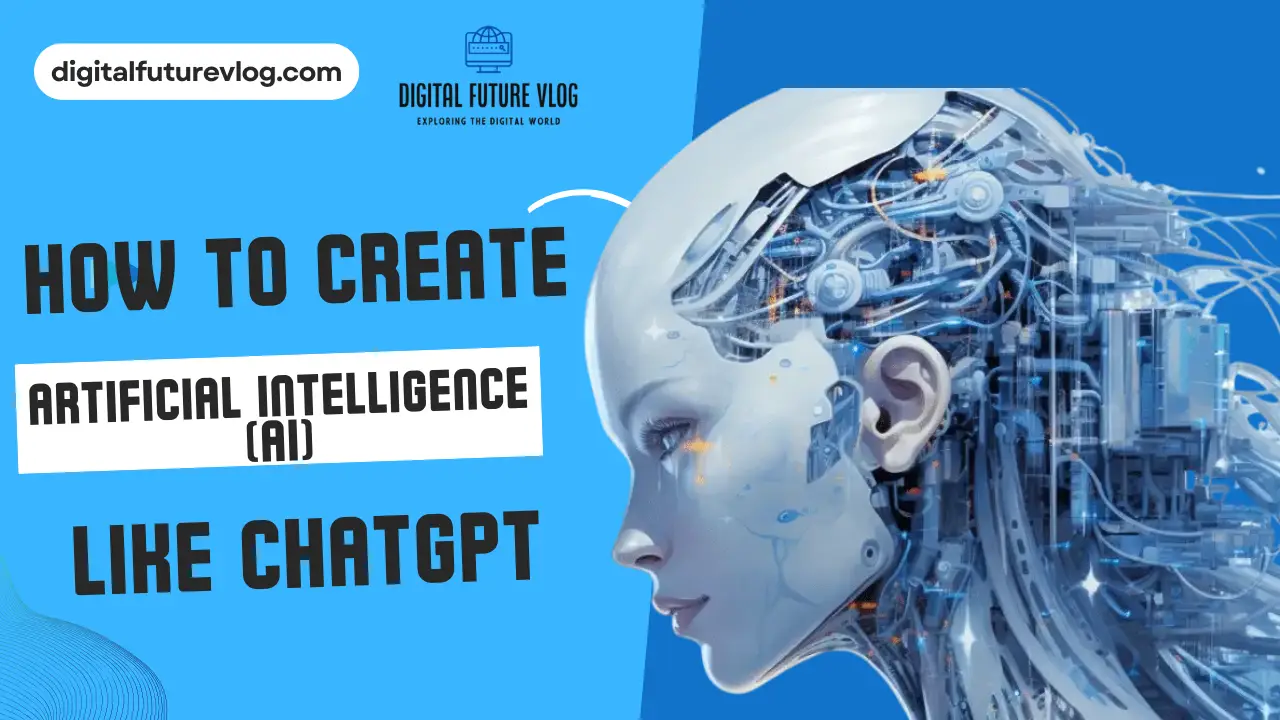Artificial Intelligence (AI) has taken the world by storm, and ChatGPT is one of the most talked-about AI tools today. From writing emails and blogs to generating code and answering questions, ChatGPT shows us how powerful Generative AI has become.
But have you ever wondered: How can I create an AI like ChatGPT?
What is ChatGPT?
ChatGPT is an AI-powered chatbot developed by OpenAI. It’s based on Generative Pre-trained Transformer (GPT) models, which use Natural Language Processing (NLP) and Deep Learning to understand and generate text.
“Chat” = Conversational interaction.
“GPT” = Generative Pre-trained Transformer.
In simple words: ChatGPT is an AI that can talk like a human because it has been trained on massive amounts of text data.
Why Build an AI Like ChatGPT?
AI chatbots like ChatGPT have huge potential across industries:
Customer Support – Automating FAQs and live chat.
Content Creation – Writing blogs, ads, product descriptions.
Education – AI tutors and learning assistants.
Healthcare – Patient support and symptom checkers.
Business Productivity – Email drafting, data analysis, reports.
No wonder tech giants like Google, Microsoft, and Meta are heavily investing in AI assistants and LLMs.
If you create something like ChatGPT, you’re not just building a chatbot—you’re building a revolutionary tool that could change industries.

The Core Building Blocks of AI Like ChatGPT
Before jumping into the “how,” let’s break down the key components that make ChatGPT work:
1. Large Language Model (LLM)
An LLM is the “brain” of ChatGPT.
It’s trained on billions of words, books, articles, and conversations.
Examples: GPT-4 (OpenAI), Gemini (Google), Claude (Anthropic), LLaMA (Meta).
2. Natural Language Processing (NLP)
NLP enables machines to understand human language.
Includes tasks like sentiment analysis, translation, summarization, and question answering.
3. Deep Learning & Neural Networks
ChatGPT uses transformer architecture (attention-based neural networks).
These networks allow the AI to “predict” the next word in a sentence with human-like accuracy.
4. Training Data
ChatGPT is trained on huge datasets from the internet, books, articles, and code.
More data = better performance.
5. Reinforcement Learning with Human Feedback (RLHF)
Human reviewers rate AI responses.
This feedback helps the model learn what’s “good” or “bad.”
Step-by-Step: How to Create AI Like ChatGPT
Now, let’s break it down into practical steps.
Step 1: Define Your Purpose
Ask yourself: Why do I want to create an AI like ChatGPT?
Do you want an AI tutor?
A customer support chatbot?
A content writing tool?
Defining the use case helps you focus your model on specific tasks.
Step 2: Choose a Language Model
You don’t have to build an AI from scratch (that costs billions). Instead, you can use pre-trained models like:
OpenAI GPT models (API access)
Google’s Gemini API
Anthropic Claude API
Meta’s LLaMA (open-source)
Mistral AI (open-source)
If you’re starting, open-source LLMs are cheaper and customizable.
Step 3: Collect & Prepare Data
Data is the fuel of AI.
Use open datasets: Common Crawl, Wikipedia, Project Gutenberg.
For customer support AI, use your company’s chat history and FAQs.
Clean the data (remove duplicates, spam, irrelevant info).
Remember: Better data = smarter AI.
Step 4: Train or Fine-Tune the Model
Two options:
Train from Scratch
Requires massive computing power (GPUs, TPUs).
Needs billions of words for training.
Cost: Millions of dollars (not beginner-friendly).
Fine-Tune an Existing Model ✅
Start with GPT, LLaMA, or Mistral.
Train it further on your specific dataset (e.g., healthcare, legal, e-commerce).
Much cheaper and faster.
Example: If you want a legal AI chatbot, fine-tune an LLM on law books, case studies, and FAQs.
Step 5: Add Reinforcement Learning
Use Reinforcement Learning with Human Feedback (RLHF) to improve quality.
Ask testers to rate AI responses.
Train your AI to “prefer” helpful, safe, and relevant answers.
This is how OpenAI trained ChatGPT to sound more natural and ethical.
Step 6: Build the User Interface
An AI like ChatGPT is only useful if users can interact with it.
Frontend: A clean chat interface (like WhatsApp or Messenger).
Backend: Connect your AI model using APIs.
Hosting: Use cloud platforms (AWS, Google Cloud, Azure).
Trending tech stack for chatbots:
Python (backend AI logic)
React / Next.js (frontend)
Flask / FastAPI (API server)
Docker (containerization)
Step 7: Add Key Features
Your chatbot should have:
Memory (remember past conversations).
Multimodal AI (text, voice, images).
Personalization (adapt to user style).
Safety filters (avoid harmful content).
For example: ChatGPT Plus offers multimodal support (text + images).
Step 8: Test & Optimize
Run beta testing with real users.
Fix errors and biases.
Optimize speed (reduce response time).
Ensure scalability for thousands of users.
Step 9: Deployment
Once your AI works:
Deploy on cloud servers.
Offer web and mobile apps.
Monetize via subscriptions, ads, or SaaS model.
Tools & Technologies You’ll Need
Programming Languages: Python, JavaScript
AI Libraries: TensorFlow, PyTorch, Hugging Face Transformers
Cloud Platforms: AWS, Google Cloud, Azure
APIs: OpenAI API, Cohere API, LangChain
Databases: MongoDB, PostgreSQL
Challenges in Building AI Like ChatGPT
High Cost – Training LLMs is expensive.
Data Privacy – Ensure user data is secure.
Ethics – Avoid harmful or biased outputs.
Scalability – Handling millions of users.
Competition – Big players like OpenAI and Google dominate.
Future of AI Chatbots
The next generation of AI chatbots will include:
Voice + Text + Video AI Assistants
Hyper-personalized AI tutors
AI in metaverse and virtual reality
AI-powered coding assistants (GitHub Copilot, Replit Ghostwriter)
Quantum AI chatbots (faster training and problem-solving)

